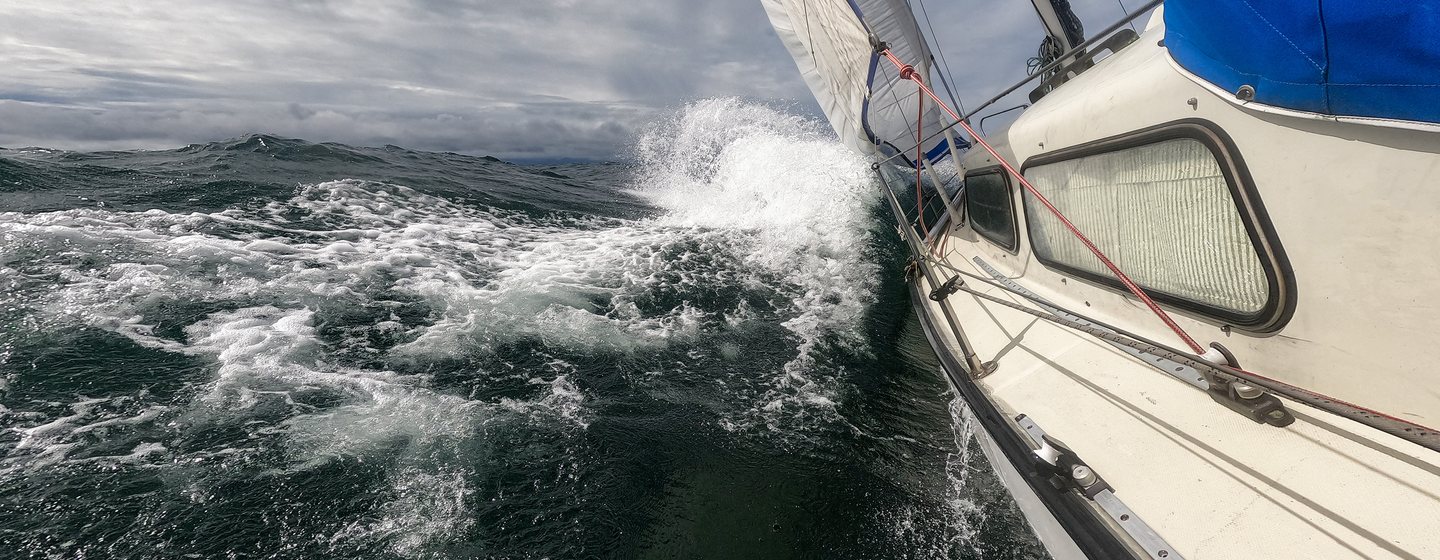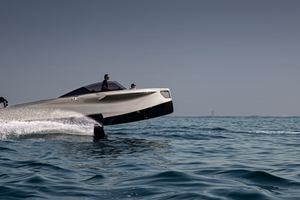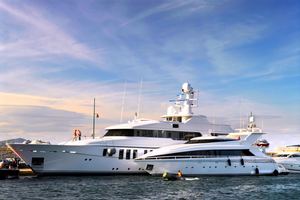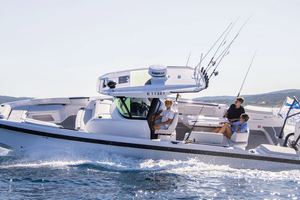Yacht performance can be affected by weather and climate. Discover how wind, waves, water temperature, and even humidity affect a yacht’s power and performance.
When you’re looking at a yacht’s performance specs, the numbers might seem reassuring—a top speed of 30 knots, a cruising range of 1,000 nautical miles, and a 2,000hp engine. But what those numbers don’t tell you is how much the weather will change everything.
The same yacht that effortlessly glides over flat, calm waters might struggle to maintain speed in rough seas, heavy winds, or extreme temperatures. And it’s not just the waves—the impact of weather on a superyacht horsepower is a science in itself.
Let’s take a closer look at how wind, waves, water temperature, and even humidity affect a yacht’s power and performance.
- Wind Resistance: The Invisible Force Slowing You Down
- Rough Seas: How Waves Rob You of Speed and Efficiency
- How Cold Water Boosts Yacht Performance
- Humidity and Air Pressure: The Silent Engine Killers
- Fuel Load and Weight: The “Hidden” Performance Factor
- Final Thoughts: Reading Beyond the Spec Sheet
Wind Resistance: The Invisible Force Slowing You Down
You don’t need to be in a storm to feel the impact of wind on your yacht’s power output. Even in moderate conditions, a strong headwind acts like an invisible brake, forcing your engines to work harder just to maintain speed.
Think of it like riding a bicycle: On a calm day, you pedal at a steady pace with minimal resistance. Now imagine pedaling into a strong headwind—you’ll need significantly more effort just to keep moving.
For yachts, wind resistance (also called aerodynamic drag) increases exponentially with speed. A 15-knot headwind might require an extra 10-15% in horsepower just to maintain the same velocity compared to calm conditions.
If a yacht’s top speed is 25 knots in calm conditions, don’t be surprised if it maxes out at 20 knots in strong headwinds—even with the same horsepower.

Rough Seas: How Waves Rob You of Speed and Efficiency
Even the most powerful yachts can struggle against high waves and choppy waters. Unlike wind, which primarily creates aerodynamic resistance, waves create hydrodynamic drag, directly affecting how the hull moves through water.
A yacht hitting oncoming waves experiences three major problems:
- Bow impact slows momentum – Every time the hull crashes into a wave, it momentarily loses speed, forcing the engines to compensate.
- Increased fuel burn – The more resistance, the harder the engines must work, leading to higher fuel consumption.
- Loss of efficiency – A yacht that cruises at 12 knots in flat water might struggle to reach 10 knots in rough seas, even at full throttle.
Performance specs often don’t account for rough seas, so a yacht’s range and fuel efficiency can drop by 20-30% in challenging conditions.
How Cold Water Boosts Yacht Performance
Here’s a little-known fact: Yachts actually perform better in colder water. This is because cold water is denser than warm water, creating more buoyancy and reducing hull drag. At the same time, cooler air temperatures improve engine efficiency by increasing oxygen density in combustion. Think of this:
A yacht tested in the Mediterranean during the summer may reach 28 knots at full throttle.
The same yacht tested in the cooler waters of Norway might hit 30 knots, despite identical engine power.
When browsing yachts for sale and you see a yacht’s performance specs based on winter conditions, expect slightly lower speeds in tropical climates.
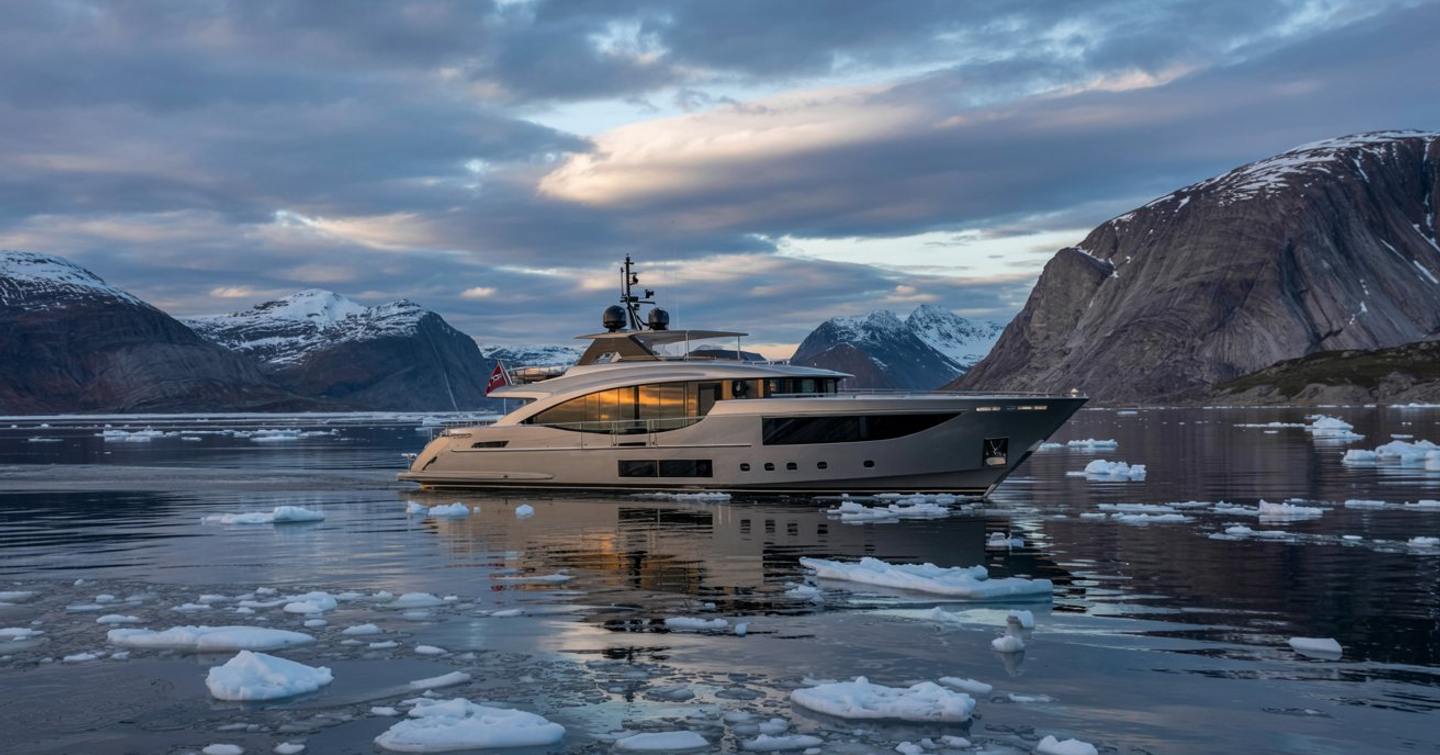
Humidity and Air Pressure: The Silent Engine Killers
Air isn’t just air—it’s a mix of oxygen, nitrogen, and water vapor. And that last part, humidity, has a direct impact on engine horsepower.
Engines rely on oxygen for combustion, but humid air contains more water vapor and less oxygen per volume. The result?
- Less efficient fuel combustion
- Slight reduction in horsepower output
- Lower overall performance in tropical, high-humidity environments
Meanwhile, low air pressure at high altitudes also reduces available oxygen, which is why some yacht engines may produce less power in areas with lower atmospheric pressure. Yachts operating in hot, humid regions like the Caribbean may feel slightly underpowered compared to when they’re in cooler, drier climates.
Fuel Load and Weight: The “Hidden” Performance Factor
A yacht’s power isn’t just about weather conditions—it’s also about how much weight it’s carrying. A fully fueled yacht with full water tanks and extra passengers can weigh several tons more than it does in a light-load test scenario.
The added weight creates more hull resistance in the water, as well as higher fuel consumption and slower acceleration and lower top speed. If a yacht’s top speed is tested with a light fuel load, expect a 5-10% speed reduction when fully stocked for a long voyage.
Final Thoughts: Reading Beyond the Spec Sheet
When buying a new yacht, performance numbers can be deceiving. Yacht builders often test in ideal conditions, but the real world introduces wind, waves, temperature changes, and varying loads that affect how much power is truly needed.
Key takeaways for yacht buyers:
- A yacht’s advertised top speed is rarely what you’ll experience in real-world conditions.
- Wind and waves can significantly reduce speed and fuel efficiency.
- Cold water can boost performance, while hot, humid air can slightly reduce horsepower.
- Heavy fuel loads and extra weight will make a yacht feel slower than its spec sheet suggests.
The best way to get realistic performance expectations when choosing a yacht to buy? Test a yacht in varied conditions before making a decision. That way, you’ll know exactly how much horsepower you need for the waters you’ll be sailing.
You May Also Be Interested In:
FAQs About Weather, Climate and Yacht Performance
Will my yacht's weight affect its performance in different weather conditions?
Yes, your yacht's weight significantly affects performance across all weather conditions. A fully loaded yacht with full fuel tanks, water tanks, and passengers can weigh several tons more than during manufacturer testing conditions. This additional weight creates more hull resistance in the water, resulting in higher fuel consumption, slower acceleration, and lower top speeds. Expect a 5-10% speed reduction when fully loaded compared to performance specifications. In challenging weather conditions, the impact of weight becomes even more pronounced, even for the world's biggest yachts.
How accurate are manufacturer performance specifications for yachts?
Manufacturer performance specifications for yachts typically represent ideal, controlled conditions rather than real-world scenarios. These specifications are often measured with light fuel loads, minimal passengers, calm seas, no wind, and optimal temperature conditions. Real-world performance can vary significantly based on weather conditions, with speed reductions of 10-30% being common in challenging environments. For accurate expectations, always test a yacht in varied conditions before purchase.
Do different hull designs handle weather conditions differently?
Yes, hull designs respond differently to various weather conditions. Deep-V hulls generally handle rough waters better by cutting through waves rather than riding over them, providing a smoother ride in challenging conditions but potentially consuming more fuel. Planing hulls perform exceptionally well in calm conditions but may struggle more in rough seas.
Displacement hulls offer more stability in various conditions but with speed limitations. When purchasing a yacht, consider how different hull designs perform in the specific weather conditions you'll most frequently encounter.
Can I improve my yacht's performance in adverse weather conditions?
Several strategies can improve yacht performance in adverse weather conditions. Trimming the yacht properly for conditions can significantly reduce drag and improve fuel efficiency. Modern stabilization systems can reduce rolling in rough seas, allowing for better speed maintenance. Regular hull cleaning and maintenance prevent marine growth that creates additional drag. Weight management is also crucial—carrying only necessary fuel, water, and supplies reduces overall weight and improves performance in challenging conditions.
How much extra horsepower do I need to maintain speed in bad weather?
For maintaining reasonable speeds in challenging weather conditions, experts often recommend having 15-25% more horsepower than you would need for calm conditions. This power reserve allows your yacht to push through headwinds and waves while maintaining comfortable cruising speeds. However, simply having more power isn't always the solution—hull design, weight distribution, and how the yacht is operated also significantly impact weather performance. The ideal approach combines adequate power with appropriate design for your typical cruising conditions.
What weather conditions are most challenging for yacht performance?
The most challenging weather conditions for yacht performance include strong headwinds combined with opposing currents and large, irregular waves. This combination creates maximum resistance against forward motion while also potentially causing uncomfortable and unpredictable yacht movement. High humidity and extreme temperatures can further reduce engine efficiency. While most modern yachts can safely handle adverse conditions, performance (speed, fuel efficiency, range) will be significantly compromised compared to calm conditions, sometimes by 30-40% or more.
